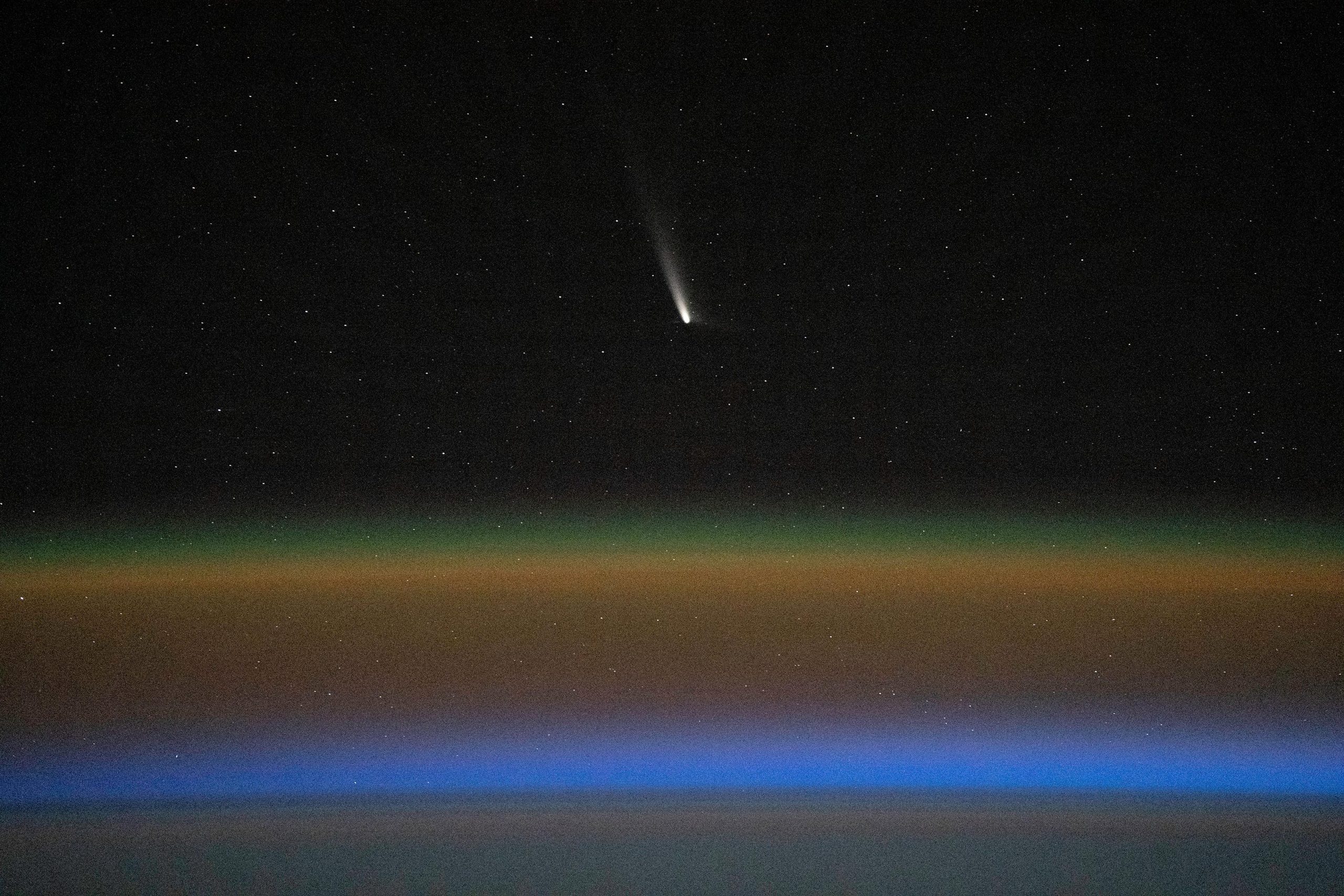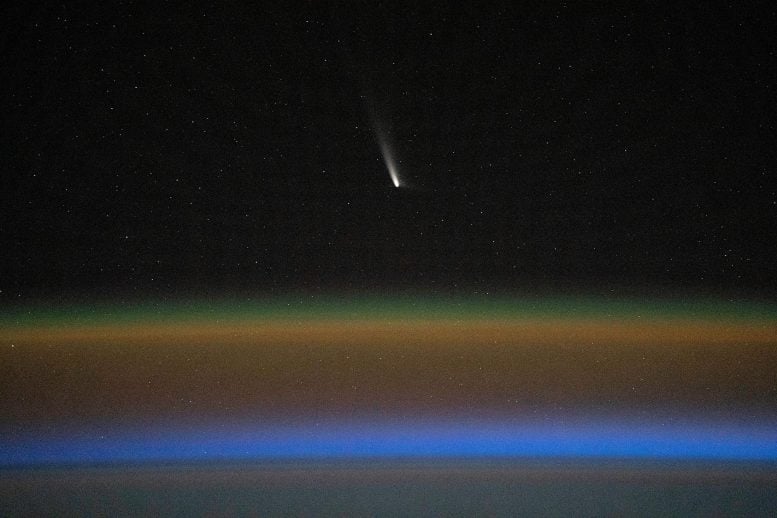

A “dirty snowball” from the distant icy cloud encircling our solar system passed by the Sun and Earth in autumn 2024.
Earth-based observers scanning the night sky in autumn 2024 may witness a celestial event that occurs only once every 80,000 years. Comet C/2023 A3 Tsuchinshan-ATLAS, originating from the distant fringes of our solar system, reached its closest approach to the Sun on September 27 and is expected to pass within about 70 million kilometers (44 million miles) of Earth on October 12. Initially visible mainly in the Southern Hemisphere and the Tropics until October 8, the comet offered increased viewing opportunities for those in the Northern Hemisphere in the following days.
Crew aboard the International Space Station have also been observing Tsuchinshan-ATLAS on its journey through the inner solar system. An astronaut captured this photo of the comet on September 19, 2024. At that time, the mass of dust, ice, and rock was approaching the closest point to the Sun on its highly elliptical orbit. The photo also offers a cross-section view of Earth’s bright horizon, or limb, and the planet’s colorful atmospheric layers.
When a comet approaches the Sun, it gets warmer. Heat causes its ice to sublimate into gas, and these gases and dust become a glowing coma and tail that can extend millions of miles. The dust tail of Tsuchinshan-ATLAS features prominently in this photo, extending toward the top of the frame. A second type of tail, the ion tail, is faintly visible, pointing down and to the right, noted astronomer Bill Cooke, who leads the Meteoroid Environment Office at NASA’s Marshall Space Flight Center.
The Sun influences the two types of tails in different ways, often sending them in different directions. The heat and pressure of sunlight push particles in the dust tail away from the Sun, though the tail may bend slightly in the direction the comet came from. Likewise, the solar wind strips ions off of the comet’s surface to create the ion tail, which may extend at a different angle.
Some comets do not survive close encounters with the Sun. If they get too close, radiation and gravitational forces may disintegrate them completely. Tsuchinshan-ATLAS did not suffer this fate, but another comet astronomers were watching, C/2024 S1 ATLAS, may have. Recent data suggest that this comet, which was expected to be visible from Earth later next year, may have recently broken into fragments, Cooke said.
Given their extremely long orbits, both of these ancient celestial travelers likely originated in the Oort Cloud, a large spherical shell of icy debris at the outer reaches of our solar system. C/2023 A3 Tsuchinshan-ATLAS was discovered in 2023, identified by observers at China’s Tsuchinshan—or “Purple Mountain”—Observatory and an ATLAS (Asteroid Terrestrial-impact Last Alert System) telescope in South Africa. It was officially named in honor of both observatories.
Astronaut photograph ISS071-E-676484 was acquired on September 19, 2024, with a Nikon Z9 digital camera using a focal length of 200 millimeters. It is provided by the ISS Crew Earth Observations Facility and the Earth Science and Remote Sensing Unit, Johnson Space Center. The image was taken by members of the Expedition 71 crew. The image has been cropped and enhanced to improve contrast, and lens artifacts have been removed. The International Space Station Program supports the laboratory as part of the ISS National Lab to help astronauts take pictures of Earth that will be of the greatest value to scientists and the public, and to make those images freely available on the Internet.